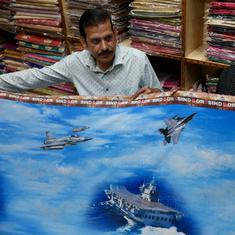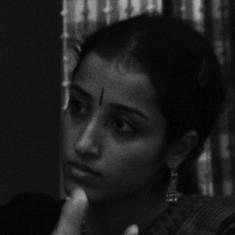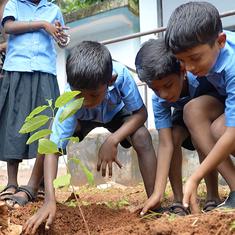Three months ago, the university’s department of German published a set of books called My Marathi to serve as formal guides for non-native speakers to study the language. The writers aim to completely change the way in which Marathi (and most other Indian languages) are taught to adult learners by using the well-established "integrated communicative approach" that is used to teach German as a foreign language.
“This approach involves integrating various aspects of language learning – like grammar, vocabulary, sentence structure, pattern drills and conversation – and teaching them through games, role play and audio-visuals,” said Vibha Surana, head of the university’s German department and the chief coordinator of the Innovative Marathi Language Teaching Project that is bringing out the My Marathi books.
“Since German and most Indian languages like Hindi, Marathi or Gujarati belong to the same family of Indo-European languages, the knowhow available in German language teaching can be applied to these Indian languages,” said Surana, who has been a German educator for more than two decades.
Flaws in the old system
The idea of writing new textbooks to learn Marathi emerged when Surana – who moved from Delhi to Mumbai 20 years ago – found herself struggling to learn Maharashtra’s state language effectively. She was already teaching German by then, and realised that the teaching methods being used in her Marathi classes were far from ideal for adult learners.
In government-funded organisations like the Sahitya Sangha, where non-native speakers can learn Marathi for a nominal annual fee, textbooks are not really used in class and teachers typically design their own lessons.
“All these years when I taught Marathi, I would make up my own sentences to illustrate grammar and they were not standardised for every batch,” said Suhas Limaye, a retired school principal who co-authored the My Marathi books with Jayavant Chunekar.
Limaye teaches Marathi and Sanskrit at one of the Sahitya Sangha centres in Mumbai, where most of his students are native Tamil, Hindi or Gujarati speakers. For their examination at the end of the course, the students are provided with a Sahitya Akademi textbook written by renowned author and educationist Acharya Atre, but Limaye believes it is inadequate for anyone whose mother tongue is not Marathi. “The text uses complex sentences in the very first chapter and the content is not married to the different grammar units that should be taught step-wise based on difficulty,” he said.
This casual approach towards Indian language teaching was the key problem for both Surana and Limaye. The application of the science of language-teaching to the content and design of the courses was largely missing. With these concerns in mind, Limaye was happy to take on Surana’s proposal to compose an entirely new set of texts based on the standardised, level-wise approach used to teach German and other European languages like French or Spanish.
A scientific approach
The first set of My Marathi books, which took two years to write and publish, are glossy, colourful, filled with visuals and targeted at both Indian and non-Indian learners. The focus is on learning communication skills, understanding grammar and structure systematically and using Marathi itself to teach the language instead of relying on translations.
“Besides using a scientific approach, we have tried to create books that arouse interest and passion for the language,” said Surana.
The production cost for the books was close to Rs 30 lakh, and actor Aamir Khan helped the team as the chief donor for the project. The set is now available for sale on Amazon.in for Rs 1,250, a price that Limaye understands is not suited for all.
“My students at the Sahitya Sangha would probably not be able to afford it, but I am already using the integrated communicative approach in class with them,” said Limaye. In fact, the German department’s Marathi project team has already started a teacher training programme to help educators understand their new approach to teaching Marathi.
The My Marathi team of authors, editors and researchers has already started work on the books for level two and have envisaged a standardised structure of six levels for 800 hours of classroom time that would help students attain proficiency in Marathi. The German department also plans to create similar textbooks for learning Hindi and other Indian languages.
Opening doors
Last month, at Kendriya Vidyalayas across India, Human Resource Development Minister Smriti Irani scrapped German as a third language in favour of Sanskrit or any other Indian language. While not completely opposed to the move, Surana believes it is useful to learn a foreign language.
“Sanskrit is also a very scientific language, but foreign languages open up new doors for understanding new things, so one should ideally have a choice,” she said.










